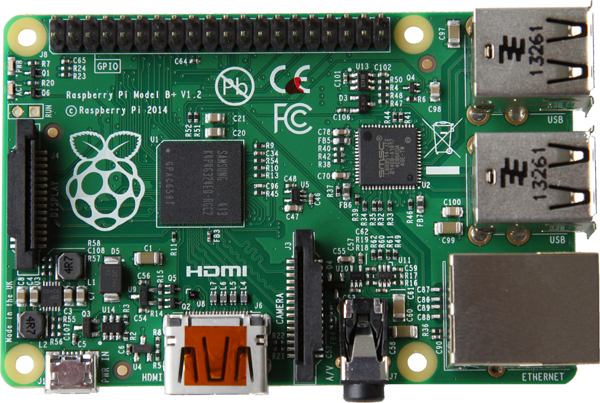The low-cost Raspberry Pi computer is getting a third edition. The B+ doesn’t have any major performance spec changes, but some potentially useful design tweaks.
The Pi launched in 2012 and was designed as an alternative to devices such as the Arduino; the Pi’s manufacturers bill it as a full computer rather than a microcontroller. To date the Pi has sold more than three million units.
As with the previous editions, the B+ is effectively a caseless motherboard form that includes USB, Ethernet, SD and HDMI connections. The new edition has the same processor and 512MB of RAM and runs the same software, Linux-based NOOBS (New Out Of The Box Software), though it can be replaced with other Linux variants.
The main additions are: four USB sockets rather than two; a 40-pin GPIO header (the connection for controlling electronic devices such as robots) rather than 26-pin; and a micro-SD card socket which uses the smoother “push-push” connection, replacing the “friction-fit” of the previous full-size SD slot.
There are also a few tweaks to reduce power consumption, cut electrical noise on the audio circuit, and generally neaten up the arrangement of the various components.
Early reviews suggest the power management is much more stable, an important change given the addition of extra USB slots which mean users won’t be restricted to a mouse and keyboard. Running a 2.5″ external drive without a powered hub is now a possibility.

